A short guide to cycads
The more you learn about cycads the more curious they are. These ancient plants were dinosaur food in their heyday.
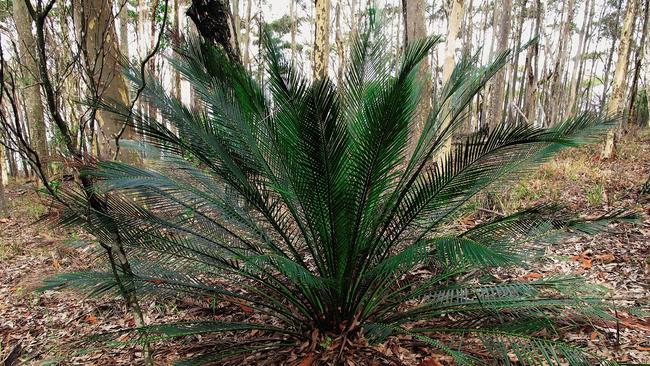
The more you learn about cycads the more curious they are. These ancient plants were dinosaur food in their heyday 200 million years ago, when they made up about 20 per cent of plant life. Although they look like palms or ferns, they are related to neither. Cycads are in fact the earliest gymnosperms – plants that bear their “naked” seeds in cones rather than flowers. This makes them closer relatives to conifers such as pine, spruce and our own ancient Wollemi pine (Wollemia nobilis).
Cycads all have separate male and female plants. The male cones tend to be longer and thinner than the female ones. Cones, especially male ones during pollen release, heat up significantly and produce sweet, resiny odours; this hot and smelly sexual activity is presumed to attract pollinators including beetles, thrips and weevils. After the male cones have released their fine, dusty pollen they collapse slowly while the female cones develop large, brightly coloured seeds over several months. The hard seeds are toxic, but the soft flesh that surrounds them is a food source for various animals that help disperse the seeds. Our First Nations peoples learnt how to leach out the toxins and make flour from the seeds, but early explorers such as Leichhardt and Stuart became very ill trying to eat them.
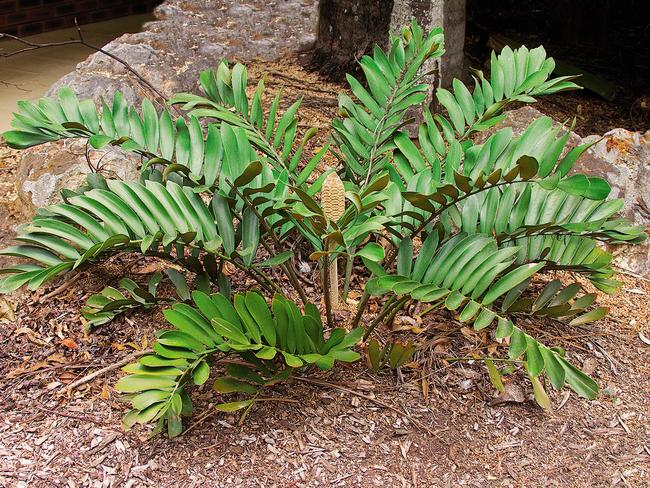
Until recently, cycads were touted as “living fossils” but studies have shown that today’s species, while morphologically similar to those of the Jurassic era, are the result of an evolutionary explosion among cycads that started a mere 12 million years ago. Species across Africa, Australia, South-East Asia and Central and South America all diversified from the same time, indicating a global trigger such as climate change – in this case global cooling. Today’s 300-odd species in 11 genera are mostly in tropical, subtropical and arid zones but many are endangered in the wild. In Australia we have 30 or so species across the tropics, down the east coast, in Western Australia and one from the arid centre.
These plants are generally slow growing, often forming a single trunk topped by a rosette of palm-like fronds. They can live for more than 1000 years and most have spiky leaves. Apart from reproducing by seed, many produce “pups” at their base to form clumps; pups can be detached to form new plants.
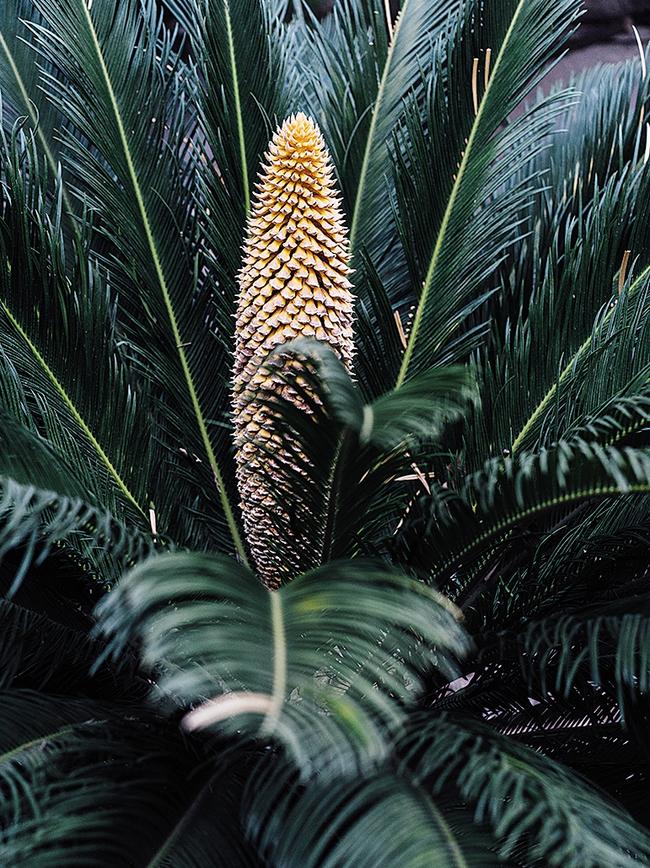
Cycads can survive extreme conditions, low nutrients and bushfires but they must have good drainage. The tallest species is one from north Queensland, Hope’s cycad (Lepidozamia hopei), whose trunk can reach 20m; the leaves of Africa’s Kwango giant cycad (Encephalartos laurentianus) can be 7m long. The smallest is Zamia pygmaea, from Cuba, with fronds 20-30cm long. The one with best name is Encephalartos horridus, from South Africa, whose sharply barbed leaves are in fact a desirable silver-blue.
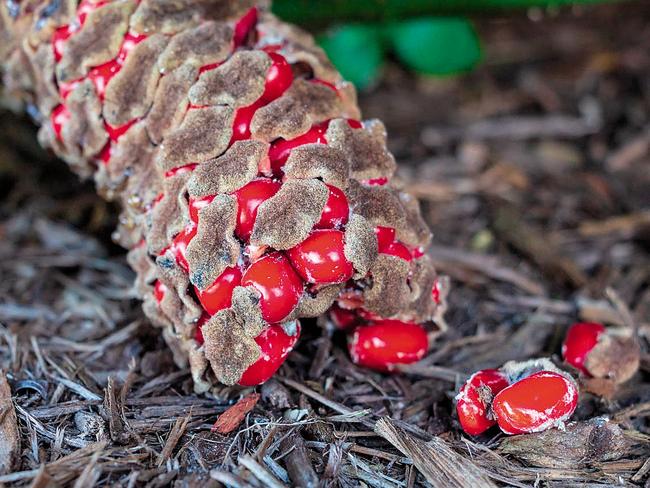
One of the most popular cycads is the Japanese sago palm (Cycas revoluta), which tolerates drought, frost, coastal, sun and shade and has spiky tips. It can reach 2-3m across, as can the burrawang (Macrozamia communis), which has feathery fronds and is endemic to NSW, where it grows in dense, extensive stands. Zamia furfuracea or cardboard plant has an architectural form and is widely available.
Most cycads do well in pots. Kew Gardens in England claims to have the world’s oldest pot plant, an Encephalartos altensteinii they’ve tended for nearly 250 years.
Good to know
25 per cent of all cycad species are critically endangered due to habitat loss and illegal collecting
Cycads have motile sperm cells (they essentially “swim” to the egg), a rarity among seed plants. The full reproductive cycle takes many months to complete
Cycads have a symbiotic relationship with cyanobacteria on their roots that allows the plant to fix nitrogen from the air
The seeds of gymnosperm cones are exposed and visible, hence “naked”, rather than being enclosed within an ovary
Q&A
I received a pot of hyacinths for Mother’s Day. Can I plant them after flowering and will they flower again? Deb Christiansen, Melbourne
Yours were forced to flower in May instead of October, so they will be confused. Hyacinth bulbs are usually planted in May after eight weeks’ chilling in the fridge. Bulbs in pots can take an extra year in the ground to flower again, so plant them out promptly and apply liquid fertiliser until the leaves die down. Then lift and store in a cool, dark, dry place until next autumn.
We intend to pressure-clean a mouldy, grimy concrete path next to garden beds. Is there is a plant-safe mould killer we could use? Gary Wilson, Highfields, Qld
Products based on benzalkonium chloride (30 Seconds Spray & Walk Away or Wet & Forget) are non-toxic and simply sprayed on and left to work over weeks, without scrubbing or hosing. You can safely spray a variety of surfaces to kill moss, mould and algae but they won’t affect ingrained dirt. Wash off any product accidentally sprayed on to foliage.
Are there any flowering bulbs that might do well under eucalypts in my coastal bush garden? Many plants have failed there. Cherie Churchod, Sydney
Go for natives with bulb-like flowers, although some are not true bulbs. Spider lily (Crinum pedunculatum) is bold and tough but the flowers are pretty and perfumed. Daintier are purple fringe lily (Thysanotus tuberosus), purple flag (Patersonia), leek lily (Bulbine bulbosa), which has yellow flowers and is edible, and white grass flag (Libertia paniculata) although it prefers moist soil. Of the traditional bulbs, try freesias and babianas.
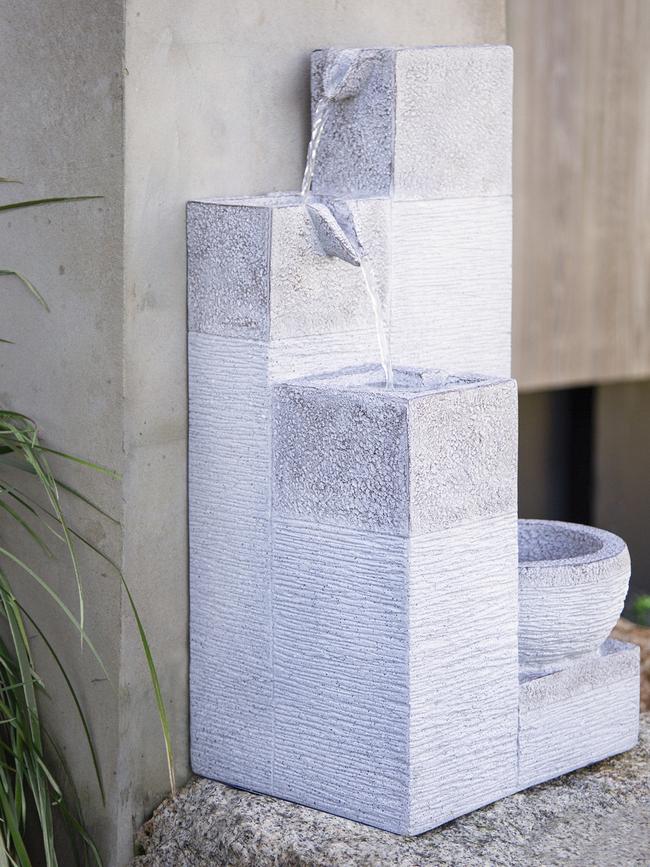
Send your questions to: helenyoungtwig@gmail.com or Helen Young, PO Box 3098, Willoughby North, NSW 2068. Website: helenyoung.com.au. The best question for June wins the tranquil Sandstone Summit water feature, complete with pump, worth $159 from Northcote Pottery.




To join the conversation, please log in. Don't have an account? Register
Join the conversation, you are commenting as Logout